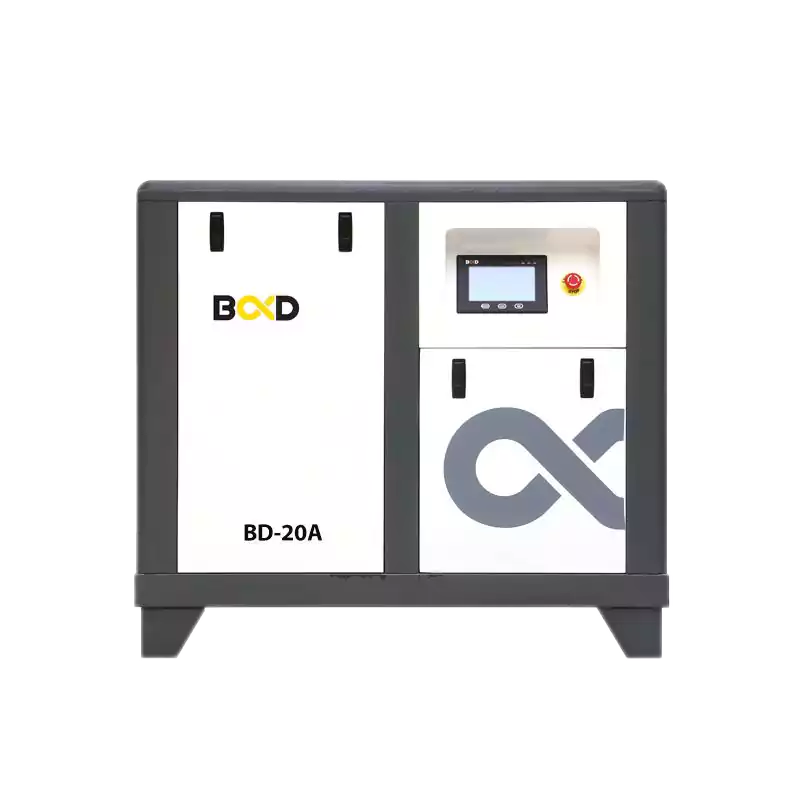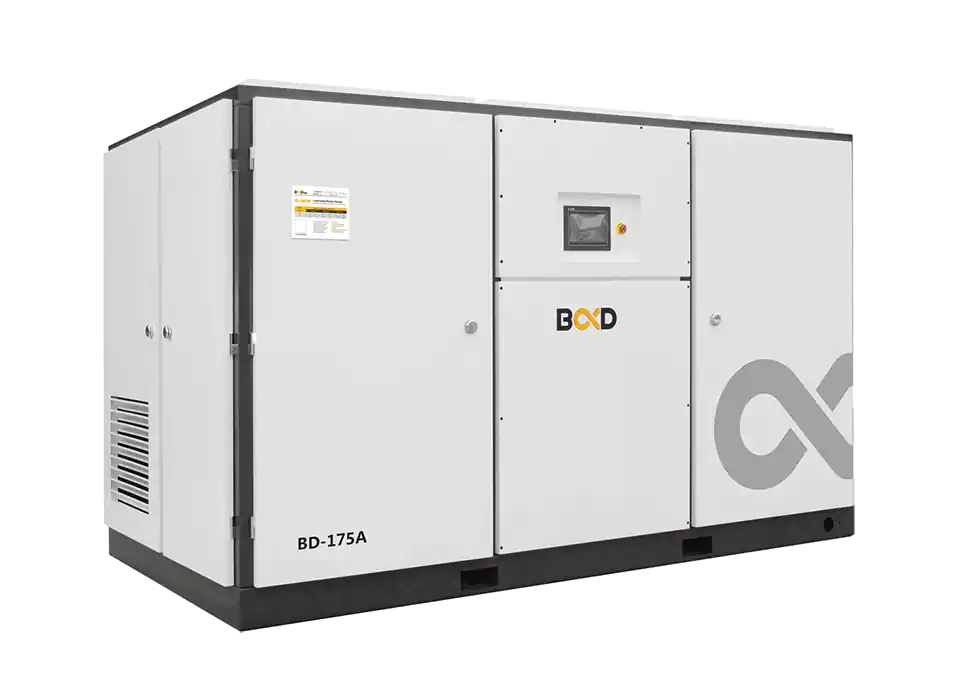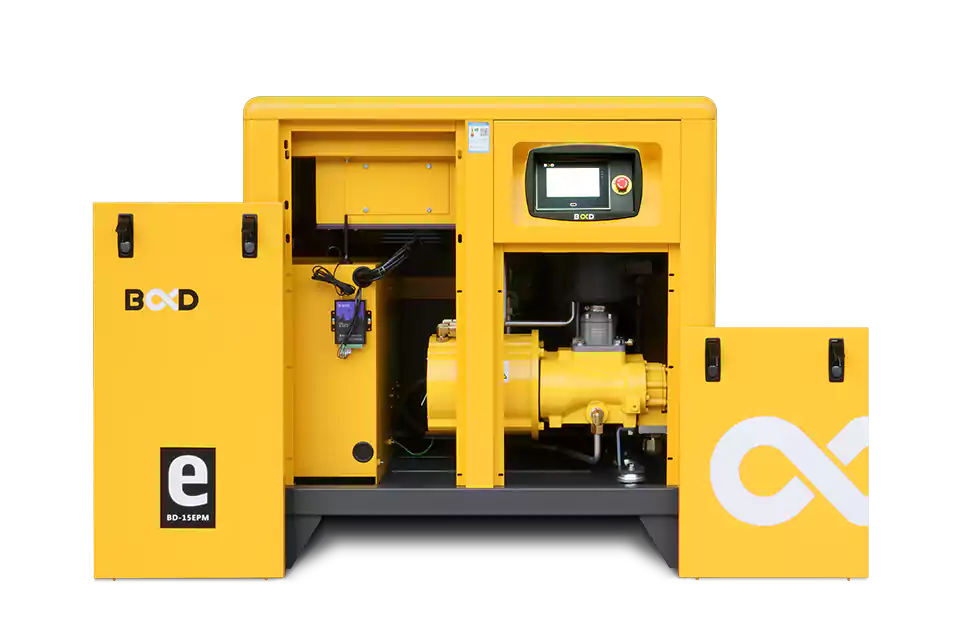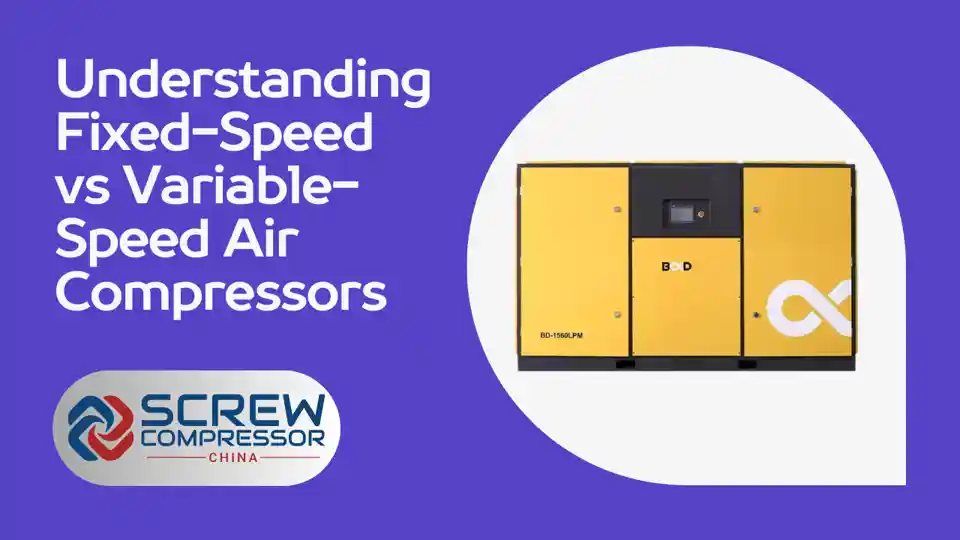
Choosing the right air compressor can significantly impact the efficiency and operation of your industrial applications. Whether you opt for a fixed-speed or a variable-speed air compressor can affect everything from energy costs to operational stability.
When selecting an air compressor, it’s crucial to understand the differences between fixed-speed and variable-speed models. Fixed-speed compressors operate at a constant speed, delivering a fixed flow of air regardless of demand. They are ideal for applications with consistent, predictable air requirements.
On the other hand, variable-speed compressors adjust their motor speed to match air demand, enhancing efficiency and reducing energy costs. They are particularly beneficial in applications with fluctuating air demands.
To make an informed decision, it’s essential to evaluate your specific air demand patterns, energy efficiency goals, and long-term cost considerations. A thorough understanding of the pros and cons of each type of compressor will help you select the most suitable option for your industrial needs.
What is a Fixed-Speed Air Compressor?
Overview of Fixed-Speed Compressors
Fixed-speed compressors operate at a constant speed, delivering a fixed flow of air regardless of the demand. This type of compressor is ideal when the air demand is consistent and predictable, as it provides a steady rate of compressed air. Learn more about the benefits of fixed-speed compressors in this detailed explanation by C&B Equipment.

Fixed-speed compressors are designed to run at a specific speed, typically measured in revolutions per minute (RPM). The motor drives the compressor at this constant speed, and the air output remains steady as long as the compressor is running. These compressors are known for their reliability and durability, making them a popular choice for many industrial applications.
One of the key advantages of fixed-speed compressors is their lower initial cost compared to variable-speed models. They also tend to have lower maintenance requirements and longer lifespans, as they are not subject to the additional wear and tear associated with frequent speed changes.
Limitations of Fixed-Speed Compressors
While fixed-speed compressors are reliable for consistent demands, they can be inefficient in variable demand scenarios due to their continuous operation at full capacity, leading to higher energy consumption and wear.
In applications where air demand fluctuates, fixed-speed compressors may consume more energy than necessary. When the demand for air is low, the compressor continues to operate at full capacity, resulting in wasted energy and increased wear on the components. This inefficiency can lead to higher operating costs and reduced equipment lifespan.
Another limitation of fixed-speed compressors is their inability to maintain a precise pressure level. As the air demand changes, the pressure in the system may fluctuate, potentially affecting the performance of pneumatic tools and equipment. This can result in inconsistent product quality and reduced productivity.
What is a Variable-Speed Air Compressor?
Overview of Variable-Speed Compressors
Variable-speed compressors adjust their motor speed to match the air demand, enhancing efficiency and reducing energy costs. These compressors are equipped with advanced speed control technology that allows them to scale their output precisely. For an in-depth look at how variable-speed technology works, check out Kaishan USA’s insight.
Variable-speed compressors use a variable frequency drive (VFD) to control the speed of the motor. The VFD adjusts the frequency and voltage supplied to the motor, allowing it to operate at different speeds based on the air demand. When the demand is low, the motor slows down, reducing energy consumption. As the demand increases, the motor speeds up to deliver the required air flow.
This precise control over motor speed enables variable-speed compressors to maintain a stable pressure level, even as the air demand changes. By closely matching the air supply to the actual demand, these compressors minimize energy waste and improve overall system efficiency.
Benefits of Variable-Speed Compressors
Variable-speed compressors offer significant advantages in terms of energy efficiency and operational flexibility. They are particularly beneficial in applications where air demand fluctuates. The technology behind these compressors can lead to substantial compressor energy savings, especially in variable air demand scenarios.
One of the primary benefits of variable-speed compressors is their ability to reduce energy consumption. By adjusting the motor speed to match the air demand, these compressors minimize idle times and avoid the energy waste associated with operating at full capacity when the demand is low. This can result in energy savings of up to 50% compared to fixed-speed compressors, depending on the application and demand profile.

In addition to energy savings, variable-speed compressors offer improved operational flexibility. They can quickly adapt to changes in air demand, ensuring a consistent supply of compressed air at the required pressure. This flexibility is particularly valuable in industries with varying production schedules or seasonal demand fluctuations.
Variable-speed compressors also tend to have a longer lifespan compared to fixed-speed models. By operating at lower speeds when the demand is low, they experience less wear and tear on the components, reducing maintenance requirements and extending the overall life of the equipment.
Comparing Fixed-Speed and Variable-Speed Compressors
Energy Efficiency
Variable-speed compressors are more energy-efficient than their fixed-speed counterparts. By adjusting their speed to the actual demand, they minimize idle times and reduce energy consumption, which can translate into lower operating costs and a smaller carbon footprint.
In a typical industrial application, a variable-speed compressor can save up to 35% on energy costs compared to a fixed-speed model. These savings are achieved by closely matching the air supply to the actual demand, eliminating the energy waste associated with over-production and idle times.
The energy efficiency of variable-speed compressors is particularly evident in applications with variable air demand. In these scenarios, the compressor can slow down during periods of low demand, consuming only the energy required to meet the current needs. As the demand increases, the compressor ramps up its speed to deliver the necessary air flow.
Operational Stability
Variable-speed compressors provide more consistent pressure, which is crucial for industries where precise air pressure is necessary. They maintain a tight pressure range, which can help in reducing wear on tools and equipment that utilize the compressed air. More details on the operational benefits can be found on Fluid-Aire Dynamics’ blog.
By maintaining a stable pressure level, variable-speed compressors ensure consistent performance of pneumatic tools and equipment. This stability is achieved through the precise control of motor speed, which allows the compressor to quickly adapt to changes in air demand without significant pressure fluctuations.
In contrast, fixed-speed compressors may experience wider pressure variations as the air demand changes. When the demand drops, the pressure in the system can rise, potentially leading to over-pressurization and increased wear on components. When the demand increases, the pressure may drop, affecting the performance of pneumatic tools and processes.
The tight pressure control provided by variable-speed compressors helps to minimize these issues, ensuring a more stable and reliable compressed air supply. This stability can lead to improved product quality, reduced downtime, and extended equipment life.
Cost-Effectiveness
Although variable-speed compressors may have a higher initial cost, the long-term savings on energy can justify the investment. Facilities can also take advantage of various energy rebates and incentives for installing energy-efficient systems.
The cost-effectiveness of variable-speed compressors is largely determined by the specific application and air demand profile. In applications with significant demand fluctuations, the energy savings achieved by variable-speed technology can quickly offset the higher initial investment. Over the life of the compressor, these savings can amount to a substantial reduction in operating costs.
Many utilities and government agencies offer incentives and rebates for installing energy-efficient equipment, including variable-speed compressors. These programs can help to offset the initial cost and improve the return on investment for facilities upgrading to variable-speed technology.
It’s important to consider the long-term cost implications when evaluating fixed-speed and variable-speed compressors. While fixed-speed models may have a lower upfront cost, their higher energy consumption and potential for increased maintenance requirements can result in higher total cost of ownership over time.
Frequently Asked Questions
Q: What is a fixed-speed air compressor?
A: A fixed-speed air compressor operates at a constant speed, providing a continuous amount of air at all times. It’s best suited for operations with a constant air demand.
Q: How does a variable-speed air compressor work?
A: A variable-speed compressor adjusts its motor speed based on the air demand, reducing energy use and wear when the demand is lower.
Q: Which type of compressor is more energy-efficient?
A: Variable-speed compressors are more energy-efficient as they adjust their performance to match the demand, avoiding unnecessary energy consumption.
Conclusion
The decision between a fixed-speed and a variable-speed air compressor should be based on your specific air demand patterns. Understanding these patterns can help in selecting the compressor that not only meets your operational needs but also optimizes your energy consumption and operational costs.
Fixed-speed compressors are a reliable choice for applications with consistent, predictable air demands. They offer lower initial costs and simpler maintenance requirements. However, they may be less efficient in scenarios with variable demand, leading to higher energy consumption and potential over-pressurization.
Variable-speed compressors, on the other hand, excel in applications with fluctuating air demands. By adjusting their motor speed to match the actual demand, they provide significant energy savings, improved operational stability, and reduced wear on components. While they may have a higher initial cost, the long-term energy savings and extended equipment life can justify the investment.
Ultimately, the choice between a fixed-speed and a variable-speed air compressor depends on your specific needs and priorities. By carefully evaluating your air demand patterns, energy efficiency goals, and long-term cost considerations, you can select the compressor technology that best aligns with your operational requirements and financial objectives.
For more information on rotary screw air compressors, their applications, and how to choose the right one for your needs, visit Screw Compressor China.
Meta Description: Explore the differences between fixed-speed and variable-speed air compressors. Understand which type suits your industrial needs based on efficiency, cost-effectiveness, and operational stability.
